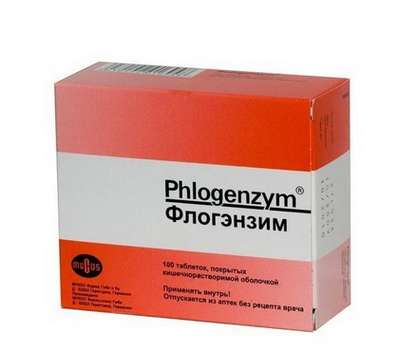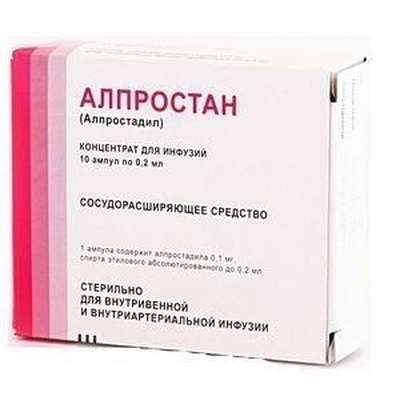Instruction for use: Zitazonium
I want this, give me price
Active substance Tamoxifen
ATX code L02BA01 Tamoxifen
Pharmacological groups
Estrogens, gestagens; Their homologues and antagonists
Antineoplastic hormonal agents and hormone antagonists
Nosological classification (ICD-10)
C43 Malignant melanoma of the skin
Malignant melanoma, Localized malignant melanoma, Localized form of malignant melanoma, Melanoma, Melanoma after surgical resection, Metastatic melanoma, Common metastatic malignant melanoma, Metastasizing form of malignant melanoma, Disseminated malignant melanoma
C49 Malignant neoplasm of other types of connective and soft tissue
Leiomyosarcoma, Angiosarcoma, Rhabdomyosarcoma, Rabdosarcoma, Soft tissue sarcoma, Embryonic rhabdomyosarcoma, Metastatic squamous cell carcinoma of the soft tissues of the head and neck
C50 Malignant neoplasm of breast
Cancer of the nipple and areola of the breast, Breast carcinoma, The hormone-dependent form of recurrent breast cancer in women in menopause, Hormone-dependent breast cancer, Disseminated breast carcinoma, Disseminated Breast Cancer, Malignant breast cancer, Malignant neoplasm of breast, Contralateral breast cancer, Locally advanced or metastatic breast cancer,Locally-distributed breast cancer, Locally-recurring breast cancer, Metastatic breast carcinoma, Metastasis of breast tumors, Metastatic breast carcinoma, Inoperable breast carcinoma, Incompatible breast cancer, Breast cancer in women with metastases, Breast cancer in men with metastases, Breast Cancer, Breast cancer in men, Mammary cancer, Breast cancer with distant metastases, Breast cancer in postmenopausal women, Breast cancer hormone-dependent, Breast cancer with local metastases, Breast cancer with metastases, Breast cancer with regional metastases,Breast cancer with metastases, Common hormone-dependent forms of breast cancer, Common Breast Cancer, Recurrent Breast Cancer, Recurrence of breast tumors, Breast cancer, Estrogen-dependent breast cancer, Estrogen-Dependent Breast Cancer, Disseminated breast cancer with overexpression of HER2, Tumors of the mammary glands
C54.1 Malignant neoplasm of endometrium
Recurrent inoperable endometrial cancer, Endometrial cancer, Metastatic endometrial carcinoma, Metastatic Endometrial Cancer, Endometrial carcinoma, Recurrent carcinomas of the endometrium, Recurrent endometrial cancer
C61 Malignant neoplasm of prostate
Adenocarcinoma of the prostate, Hormone-dependent prostate cancer, Hormone-Resistant Prostate Cancer, Malignant tumor of prostate, Malignant neoplasm of prostate, Carcinoma of the prostate, Locally-distributed non-metastatic prostate cancer, Locally advanced prostate cancer, Locally spread prostate cancer, Metastatic prostatic carcinoma, Metastatic prostate cancer, Metastatic hormone-resistant prostate cancer, Non-metastatic prostate cancer, Incompatible prostate cancer, Prostate Cancer, Prostate cancer, Common prostate cancer, Testosterone-Depot Prostate Cancer
C64 Malignant neoplasm of kidney, except for renal pelvis
Wilms swelling, Kidney Cancer, Metastatic Renal Cell Carcinoma, Renal carcinoma, Inoperable kidney carcinomas, Metastatic kidney carcinoma, Metastatic Renal Cell Carcinoma, Wilms tumor, Wilms swelling, Adenomyosarcoma, Adenomyocystosarcoma, Adenosarcoma of the kidney, Kidney Cancer, Common renal cell carcinoma, Nephroblastoma, Nephroma, Embryonal nephroma, Recurrent carcinoma of the kidney, Birch-Hirschfeld Tumor, Common renal cell carcinoma, Tumors of the kidney
Composition and form of release
Tablets 1 table.
Tamoxifen 10 mg \ 20 mg \ 30 mg \ 40 mg
(In the form of tamoxifen citrate 15.2, 30.4, 45.6, or 60.8 mg, respectively)
Auxiliary substances: magnesium stearate; Sodium amylopectin glycolate (type A); Povidone; MCC (microcrystalline cellulose); potato starch; Lactose monohydrate
In the blister 10 pcs .; In a box of cardboard 3 blisters.
Description of dosage form
Tablets of 10 mg: round, flat tablets of white or grayish-white color, with engraving "ZITA" on one side.
Tablets of 20 mg: round, flat tablets of white or grayish-white color, with engraving "ZT20" on one side.
Tablets of 30 mg: round, flat tablets of white or grayish-white color, with engraving "E223" on one side.
Tablets of 40 mg: oblong, biconvex tablets white or grayish-white, with a risk on one side.
pharmachologic effect
Pharmacological action - antitumor, antiestrogenic.
The drug and some of its metabolites block the estrogen receptors (compete with estradiol for binding sites with cytoplasmic estrogen receptors) in the tissues of the mammary gland, uterus, vagina, anterior pituitary gland and tumors with a high estrogen receptor content. The resulting receptor complex tamoxifen inhibits cell division and promotes the death of tumor cells.
Pharmacokinetics
It is well absorbed and metabolized in the liver with the formation of several metabolites. Cmax (after a single dose) is achieved within 4-7 hours. A stable level of serum tamoxifen concentration is usually recorded after 3-4 weeks of administration. It is output in 2 phases: with the initial T1 / 2 - 7-14 hours and with the subsequent slow terminal T1 / 2 - 7 days. It is allocated mainly in the form of conjugates mainly with feces and a small part is excreted in the urine.
Indications
Estrogen-dependent breast cancer in women (especially menopause) and mammary glands in men; Ovarian cancer, endometrium, kidney, melanoma, soft tissue sarcoma (with estrogen receptors in the tumor), prostate cancer in resistance to other drugs (drug).
Contraindications
Hypersensitivity, expressed thrombophlebitis, pregnancy, breast-feeding.
Application in pregnancy and lactation
Contraindicated in pregnancy. At the time of treatment should stop breastfeeding.
Side effects
From the nervous system and sensory organs: headache, dizziness, fatigue, depression, confusion, visual impairment, corneal changes, cataracts and retinopathy.
From the cardiovascular system and blood (hematopoiesis, hemostasis): thrombophlebitis, thromboembolism, transient leukopenia, thrombocytopenia.
On the part of the gastrointestinal tract: abdominal pain, nausea, vomiting, loss of appetite, constipation, increased level of hepatic enzymes, severe violations of the liver (cholestasis, hepatitis).
On the part of the genitourinary system: bleeding or vaginal discharge, amenorrhea or irregular menstruation in men before the menopause, the appearance of a reversible cystic ovarian tumor, fluid retention.
Allergic reactions: itching in the genital area, skin rash.
Other: alopecia, pain in the area of the lesion and / or in the bones, increase in the size of the soft tissue formations (accompanied by severe erythema of the affected areas and adjacent areas), hypercalcemia, paroxysmal sensation of fever, increased body temperature, with prolonged use - cases of endometrial changes involving hyperplasia , Polyps, intrauterine fibroids and in rare cases - endometrial cancer.
Interaction
With a simultaneous appointment with cytostatics, the risk of thrombosis increases.
Potentiates the anticoagulant effect of coumarin derivatives (eg, warfarin). Diuretics of the thiazide series increase the risk of hypercalcemia. When combined with tegafur, the occurrence of chronic hepatitis and cirrhosis of the liver (there are two reports), with other hormonal drugs (especially estrogen-containing contraceptives) - mutual weakening of the effect.
Dosing and Administration
Inside, not liquid, squeezed a small amount of liquid, the dosing regimen is set individually, depending on the indications. The standard dose is 20 mg, the daily dose is 20-40 mg in 1 or 2 doses (morning and evening) daily (long-term).
Overdose
Symptoms: increased adverse reactions.
Treatment: symptomatic therapy.
Precautionary measures
Regular gynecological examination is necessary. When bloody discharge or bleeding from the vagina, signs of thrombosis of the lower extremities (pain in the legs or their puffiness), pulmonary embolism (dyspnea), the reception should be discontinued. At the beginning of treatment should determine the concentration of calcium in the blood serum in patients with metastases in the bone (with severe violations of reception should be temporarily discontinued). Women who have an active sex life, because of the possible ovulation during and during 2 months after the end of treatment is recommended the use of mechanical or non-hormonal contraceptives.
storage Conditions
In the dark place at a temperature of 15-25 ° C.
Keep out of the reach of children.
shelf life
4 years.
Do not use after the expiry date printed on the package.

 Cart
Cart





